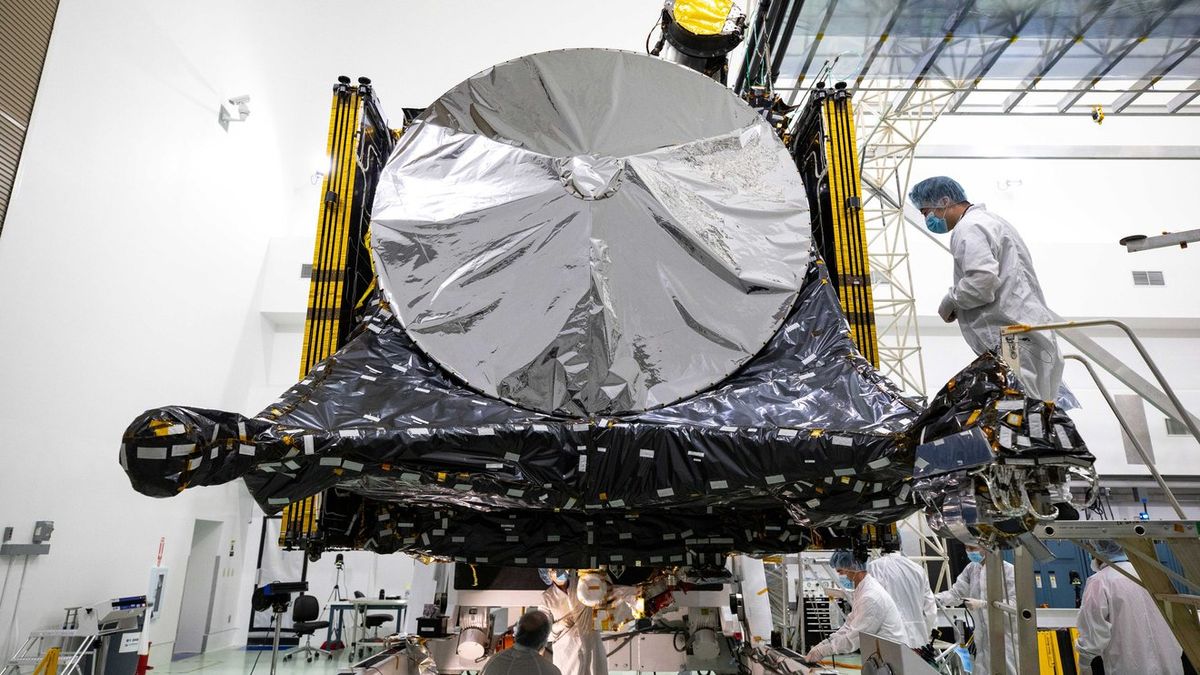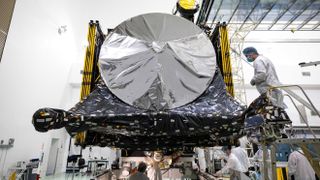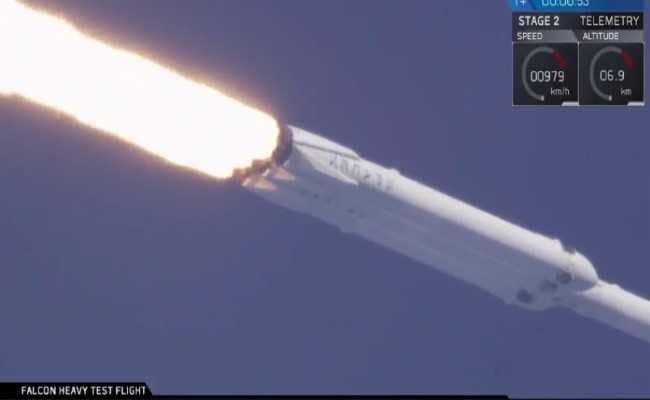Hamartia Antidote
ELITE MEMBER

- Joined
- Nov 17, 2013
- Messages
- 35,188
- Reaction score
- 30
- Country
- Location
It looks like satellites are finally starting to scale up and take advantage of the Falcon Heavy.
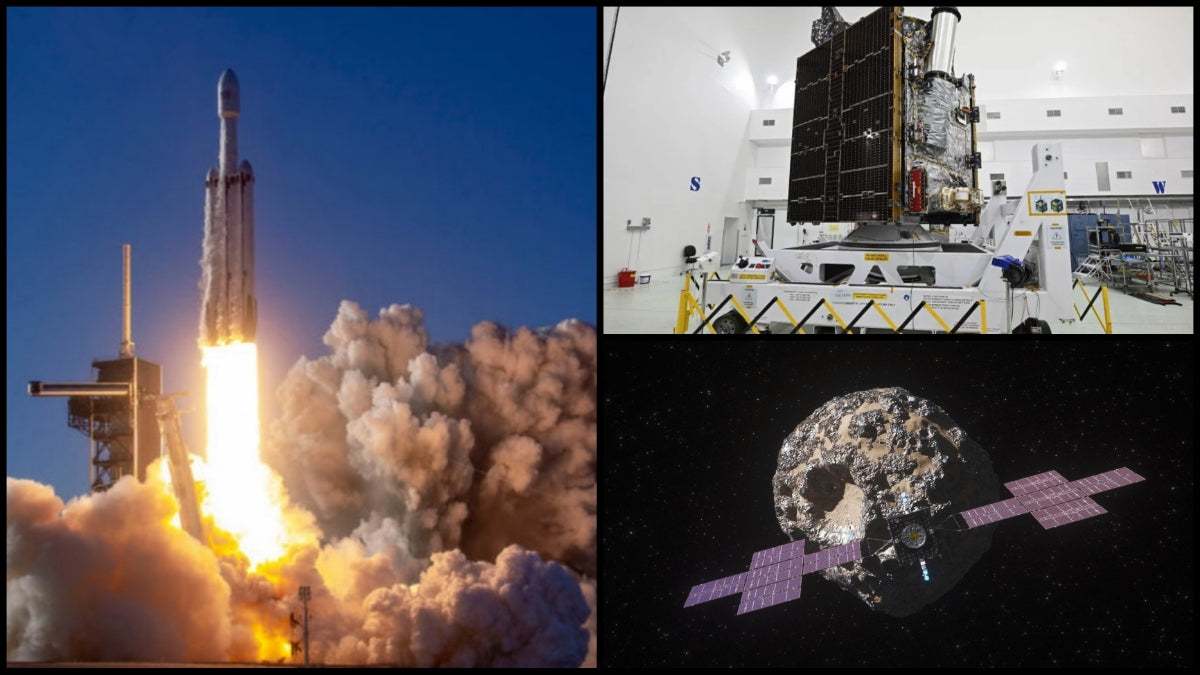
 www.tesmanian.com
www.tesmanian.com
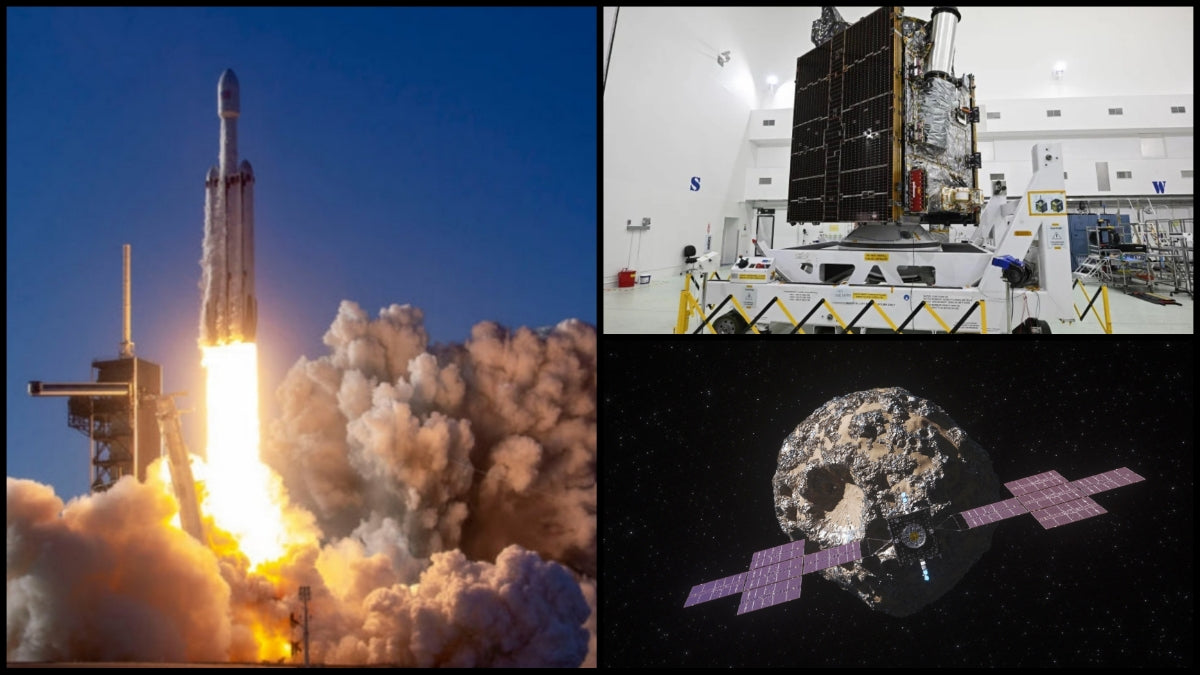
NASA's highly anticipated $985 million Psyche mission is gearing up for an early October launch. The mission involves sending a futuristic electric propulsion-driven orbiter set to rendezvous with the 16 Psyche asteroid, believed to be metal-rich. It holds a value of approximately $10,000-quadrillion dollars worth of nickel and iron.
This asteroid, discovered by Italian astronomer Annibale de Gasparis in 1852, has a diameter of about 140 miles and is located between 235 million and 309 million miles away. Named after the Greek god Psyche
The Psyche spacecraft is scheduled to take off on October 5 using a SpaceX Falcon Heavy rocket from the Kennedy Space Center in Florida.

Equipped with four Hall-effect thrusters, the spacecraft will use its advanced technology to accelerate towards the asteroid soon after SpaceX propels it to orbit. The Psyche spacecraft was previously scheduled to launch in August but was delayed to fix some software issues. If the Psyche mission is ready to lift off in October this year, the spacecraft will arrive at the asteroid in around six years from now. It will fly towards the Red Planet where it will use a Mars gravity assist sometime in 2026, and NASA estimates it will arrive at the Psyche asteroid by August 2029.
SpaceX's Falcon Heavy rocket is required for this mission because the Psyche spacecraft is massive, measuring 10 feet by 8 feet and with its solar panels deployed it measures 81 feet (25 meters) by 24 feet (7.3 meters). It has a mass of 2,608 kilograms (5,750 pounds).
NASA astronomers have a great interest in the 16-Psyche asteroid because it is composed of metallic iron and nickel – one of the building blocks of our solar system, a composition similar to Earth’s core. They believe the asteroid could offer insight into the early years of our solar system. 16-Psyche is 95% metal, believed to be a nickel-iron core of an ancient planet, whose rocky outer layers were stripped away by cosmic impacts. Terrestrial planets like Earth, have metallic cores lying below the rocky surface, deep within rocky mantles. On Earth, scientists can't dig too deep to study the core because machinery would melt. So, the mission could offer insight into how planets evolve.

Moreover, the mission aims to test advanced laser communication technology known as Deep Space Optical Communications (DSOC). This technology uses near-infrared laser light for data transmission, offering higher data rates and greater efficiency compared to traditional radio waves. The DSOC lasers will operate from NASA's Table Mountain Facility in California and are expected to transmit data over distances as great as 200 million miles.
The successful execution of the Psyche mission could validate theories about the early stages of the Solar System's formation and bring significant advancements to our understanding of celestial bodies and their origins.

SpaceX Falcon Heavy will launch NASA's $985 million Psyche mission towards a metal-rich Asteroid in October
NASA's highly anticipated $985 million Psyche mission is gearing up for an early October launch. The mission involves sending a futuristic electric propulsion-driven orbiter set to rendezvous with the 16 Psyche asteroid, believed to be metal-rich. It holds a value of approximately...

NASA's highly anticipated $985 million Psyche mission is gearing up for an early October launch. The mission involves sending a futuristic electric propulsion-driven orbiter set to rendezvous with the 16 Psyche asteroid, believed to be metal-rich. It holds a value of approximately $10,000-quadrillion dollars worth of nickel and iron.
This asteroid, discovered by Italian astronomer Annibale de Gasparis in 1852, has a diameter of about 140 miles and is located between 235 million and 309 million miles away. Named after the Greek god Psyche
The Psyche spacecraft is scheduled to take off on October 5 using a SpaceX Falcon Heavy rocket from the Kennedy Space Center in Florida.
Equipped with four Hall-effect thrusters, the spacecraft will use its advanced technology to accelerate towards the asteroid soon after SpaceX propels it to orbit. The Psyche spacecraft was previously scheduled to launch in August but was delayed to fix some software issues. If the Psyche mission is ready to lift off in October this year, the spacecraft will arrive at the asteroid in around six years from now. It will fly towards the Red Planet where it will use a Mars gravity assist sometime in 2026, and NASA estimates it will arrive at the Psyche asteroid by August 2029.
SpaceX's Falcon Heavy rocket is required for this mission because the Psyche spacecraft is massive, measuring 10 feet by 8 feet and with its solar panels deployed it measures 81 feet (25 meters) by 24 feet (7.3 meters). It has a mass of 2,608 kilograms (5,750 pounds).
NASA astronomers have a great interest in the 16-Psyche asteroid because it is composed of metallic iron and nickel – one of the building blocks of our solar system, a composition similar to Earth’s core. They believe the asteroid could offer insight into the early years of our solar system. 16-Psyche is 95% metal, believed to be a nickel-iron core of an ancient planet, whose rocky outer layers were stripped away by cosmic impacts. Terrestrial planets like Earth, have metallic cores lying below the rocky surface, deep within rocky mantles. On Earth, scientists can't dig too deep to study the core because machinery would melt. So, the mission could offer insight into how planets evolve.

Moreover, the mission aims to test advanced laser communication technology known as Deep Space Optical Communications (DSOC). This technology uses near-infrared laser light for data transmission, offering higher data rates and greater efficiency compared to traditional radio waves. The DSOC lasers will operate from NASA's Table Mountain Facility in California and are expected to transmit data over distances as great as 200 million miles.

The successful execution of the Psyche mission could validate theories about the early stages of the Solar System's formation and bring significant advancements to our understanding of celestial bodies and their origins.
Last edited:

